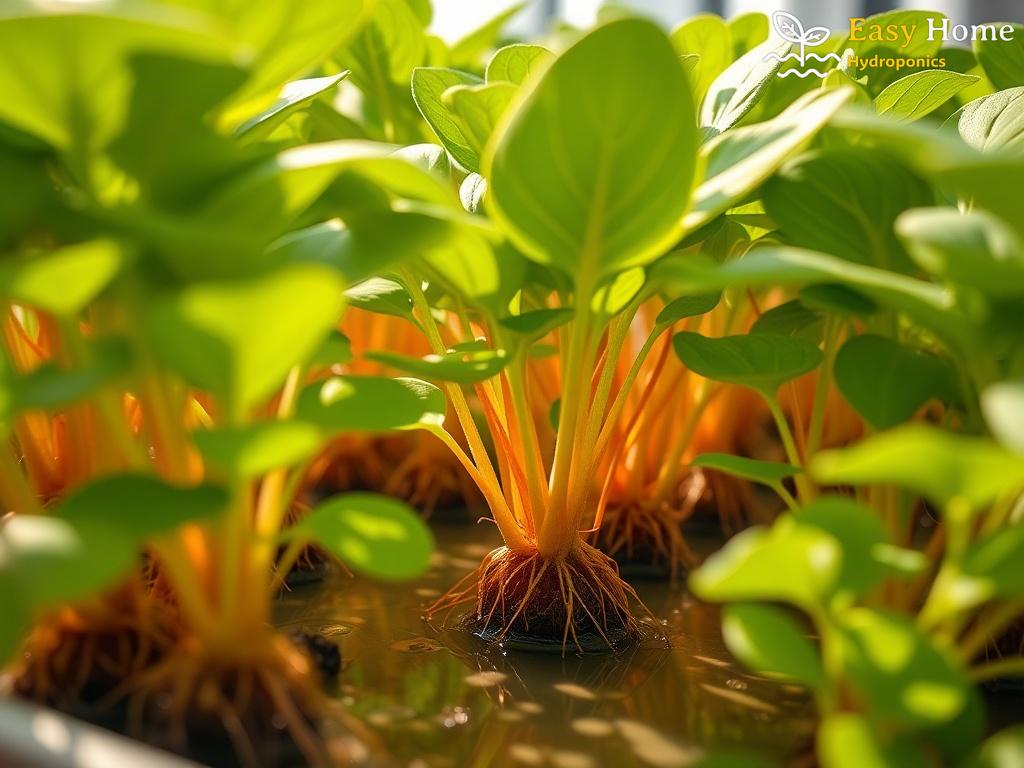Unlocking Nutrient Potential: The Science Behind Hydroponic Boosters
In the world of hydroponics, the quest for optimal growth conditions never ceases. As growers seek to maximize their efforts, nutrient uptake boosters emerge as a beacon of hope. These boosters are designed to enhance the absorption of essential nutrients, ensuring that plants flourish in their soilless environment. But what exactly are these boosters, and how do they work? Let’s delve into the science behind these remarkable substances.
Understanding how plants absorb nutrients is crucial for any hydroponic enthusiast. Nutrient uptake is a complex process influenced by various factors including pH levels, temperature, and the ionic composition of the nutrient solution. Hydroponic boosters typically contain organic acids, amino acids, and other bioactive compounds that facilitate this process.
For instance, amino acids play a significant role in chelating nutrients, making them more available to plant roots. This enhanced availability leads to improved nutrient absorption, resulting in healthier, more productive plants. Moreover, these boosters can help to stabilize pH levels, creating an optimal environment for nutrient uptake.
When selecting a nutrient uptake booster, it’s important to consider the specific needs of your hydroponic system. Below is a comparison of some popular nutrient boosters, highlighting their unique properties and advantages:
| Booster | Main Ingredients | Benefits | Best For |
|---|---|---|---|
| Liquid Seaweed | Seaweed extract | Stimulates root growth, enhances nutrient uptake | All types of hydroponic systems |
| Fulvic Acid | Humic substances | Improves nutrient absorption, boosts microbial activity | Vegetative growth phases |
| Mycorrhizal Fungi | Beneficial fungi | Increases root surface area, enhances nutrient transport | Root development stages |
To achieve the best results with nutrient uptake boosters, timing and application methods are key. Implementing these boosters during critical growth phases—such as seedling development or flowering—can yield remarkable improvements in plant health and yield. Additionally, combining different types of boosters can create a synergistic effect, amplifying their benefits.
For example, using liquid seaweed in conjunction with fulvic acid can not only promote robust root development but also enhance the overall nutrient profile available to the plants. Experimentation and careful observation will guide you in fine-tuning your approach, ensuring that your hydroponic garden thrives.
Top 5 Essential Nutrient Uptake Boosters for Hydroponic Success
In the fascinating realm of hydroponics, the role of nutrient uptake boosters cannot be overstated. These substances not only enhance nutrient absorption but also bolster plant health, setting the stage for bountiful harvests. For small hydroponic systems, where space and resources may be limited, selecting the right boosters becomes even more critical. Here, we explore the top five essential nutrient uptake boosters that can transform your hydroponic experience.
This powerhouse of nutrients is derived from marine plants and is known for its ability to stimulate root growth. Liquid seaweed is packed with trace elements and hormones that promote overall plant vigor. Its natural composition ensures that your plants can absorb nutrients more effectively, making it a must-have for any hydroponic grower.
Fulvic acid, a component of humic substances, is celebrated for its ability to enhance nutrient solubility and absorption. It helps in breaking down nutrients into forms that are readily available for plant uptake. This booster is particularly beneficial during the vegetative growth phase, ensuring that your plants receive all the essential elements they need to thrive.
These beneficial fungi form symbiotic relationships with plant roots, significantly increasing the root surface area. This connection not only enhances nutrient transport but also improves water absorption. Incorporating mycorrhizal fungi into your hydroponic system can yield impressive results, especially during critical root development stages.
Amino acids are the building blocks of proteins and play a vital role in plant metabolism. They aid in chelating nutrients, making them more accessible for absorption. By including amino acids in your nutrient regimen, you’ll not only promote better nutrient uptake but also enhance plant resilience against stress.
Humic acid is another organic compound that can work wonders in hydroponic systems. It improves soil structure and nutrient retention, allowing plants to access nutrients more efficiently. Utilizing humic acid can lead to stronger root systems and increased plant growth, making it an essential booster for any hydroponic setup.
In summary, employing these nutrient uptake boosters in your small hydroponic system can significantly enhance plant health and productivity. By understanding their unique properties and synergistic benefits, you can create an environment where your plants can truly thrive.
The Role of pH and EC in Nutrient Absorption: A Hydroponic Guide

In the intricate world of hydroponics, the balance of pH and electrical conductivity (EC) plays a pivotal role in nutrient absorption. Just as a maestro conducts an orchestra, these two parameters orchestrate the availability of nutrients to plants, influencing their growth and overall health. Understanding how pH and EC interact can empower growers to fine-tune their hydroponic systems, ensuring that every drop of nutrient solution is effectively utilized.
The pH level of your nutrient solution is a critical factor that determines how well plants can access essential nutrients. Each nutrient has a specific pH range in which it is most soluble and available for uptake. For instance, iron becomes less available as pH levels rise above 6.5, while phosphorus is optimally absorbed between pH 5.5 and 6.5. Maintaining the right pH can be the difference between a flourishing hydroponic garden and one that struggles.
Growers should regularly monitor pH levels and adjust them accordingly using pH up or down solutions. This proactive approach not only enhances nutrient availability but also contributes to overall plant vigor.
Electrical conductivity serves as a measure of the total dissolved salts in your nutrient solution, reflecting the concentration of nutrients available to plants. A healthy EC level indicates that your plants are receiving an adequate supply of essential minerals, while an excessively high EC can lead to nutrient lockout and stress.
To ensure your hydroponic system thrives, it’s essential to keep EC levels within the ideal range. Here’s a brief overview of optimal EC levels during various growth stages:
- Seedling Stage: 0.5 – 1.0 mS/cm
- Vegetative Stage: 1.0 – 2.0 mS/cm
- Flowering Stage: 1.5 – 2.5 mS/cm
By keeping a close eye on both pH and EC, hydroponic enthusiasts can create an environment where plants not only survive but thrive. The synergy between these two parameters is foundational to maximizing the effectiveness of nutrient uptake boosters, further enhancing the overall health and yield of your hydroponic system.
Natural vs. Synthetic Boosters: Finding the Best Fit for Your System
In the dynamic ecosystem of hydroponics, one question often arises: should you opt for natural or synthetic nutrient uptake boosters? Each category boasts its own set of advantages and disadvantages, creating a complex decision-making process for hydroponic growers. Understanding the inherent differences and potential impacts on plant health can guide you to make an informed choice that aligns with your growing philosophy and system requirements.
Natural nutrient boosters, derived from organic sources like seaweed, fish emulsion, or compost, present a myriad of benefits that resonate with many growers. Not only do these boosters enhance nutrient uptake through their rich composition of trace elements and natural hormones, but they also promote soil health and microbial diversity in hydroponic systems. This organic approach often results in plants that are not only healthier but also more resilient to pests and diseases.
Moreover, natural boosters typically improve the overall structure of the growing medium, allowing for better aeration and water retention. These properties can be especially beneficial in small hydroponic systems, where space and resources are at a premium. However, the drawback is that natural boosters may take longer to yield visible results compared to their synthetic counterparts, requiring patience and careful observation from the grower.
On the other side of the spectrum, synthetic nutrient uptake boosters provide a concentrated and predictable source of essential nutrients. Their formulations are designed to deliver quick results, making them appealing for hydroponic enthusiasts seeking immediate improvements in plant growth. Synthetic boosters often come with precise nutrient ratios, allowing for targeted applications tailored to specific growth stages.
Furthermore, synthetic boosters can be more cost-effective in the short term due to their high potency and ease of use. However, they may not contribute to long-term soil health and can lead to nutrient imbalances if not monitored closely. Some growers express concerns about the environmental impact of synthetic options, raising important questions about sustainability in hydroponic practices.
| Feature | Natural Boosters | Synthetic Boosters |
|---|---|---|
| Source | Organic (e.g., seaweed, compost) | Chemical (e.g., nitrogen, phosphorus) |
| Speed of Results | Gradual | Rapid |
| Environmental Impact | Low | Variable |
| Cost | Potentially Higher | Generally Lower |
| Soil Health | Improves | Neutral |
Ultimately, the choice between natural and synthetic nutrient uptake boosters hinges on your individual goals and values as a grower. Whether you prioritize organic integrity or swift growth, understanding the nuances of each option will empower you to cultivate a thriving hydroponic system tailored to your specific needs.
Maximizing Yields: Timing and Techniques for Nutrient Application
In the intricate world of hydroponics, the timing of nutrient application can be as critical as the nutrients themselves. Plants, much like humans, have their own growth rhythms, and synchronizing nutrient boosts with these natural cycles can lead to astonishing results. Understanding the specific growth stages of your plants allows you to tailor your nutrient application strategy effectively. For instance, seedlings are particularly sensitive and require a gentle introduction to nutrients, while during the flowering phase, plants demand a surge of nutrients to support their reproductive processes. By aligning nutrient application with these growth milestones, you can significantly enhance the yield and quality of your hydroponic produce.
While the timing of nutrient application is paramount, the techniques employed can make a world of difference as well. Foliar feeding, for example, is an innovative technique that allows nutrients to be applied directly to the leaves, leading to rapid absorption and utilization. This method is particularly effective during the vegetative phase when plants are actively growing and can benefit from an immediate nutrient boost. Similarly, incorporating nutrient uptake boosters into the root zone through techniques such as drip irrigation or deep water culture ensures that nutrients are delivered right where they are needed most. Moreover, the use of hydroponic additives, like humic and fulvic acids, can enhance the overall efficiency of nutrient uptake, creating a synergistic effect that propels plant growth.
Additionally, the concept of staggered application has gained traction among hydroponic enthusiasts. This technique involves applying smaller doses of nutrients at regular intervals rather than overwhelming the plants with a large amount all at once. This not only helps prevent nutrient burn but also allows for a more sustained release, ensuring that plants have access to essential nutrients throughout their growth cycle. Experimenting with these techniques can yield remarkable results, guiding you toward a thriving hydroponic garden.




